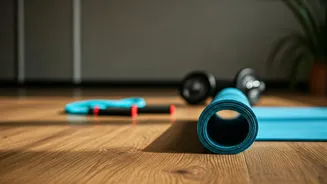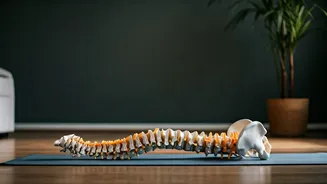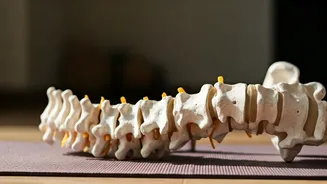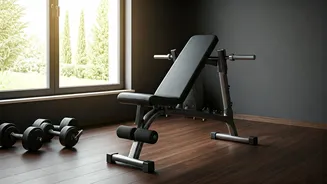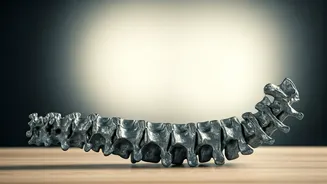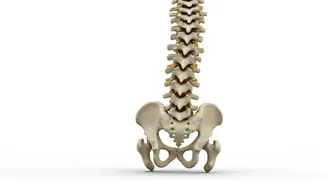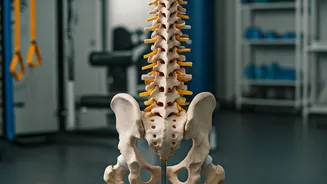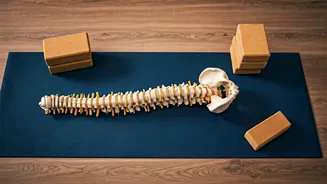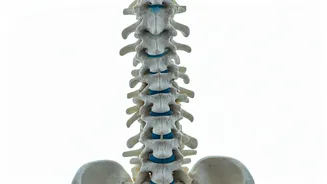Understanding Back Pain
Back pain is a common ailment that, if left unattended, can significantly impact a person's life. It can lead to reduced mobility, hampering daily activities
and affecting productivity. Additionally, chronic back pain can diminish the overall quality of life. Addressing back pain promptly is essential for maintaining an active and fulfilling lifestyle. Individuals experiencing back pain should not delay seeking solutions, as early intervention often yields better outcomes and prevents the condition from worsening. Simple lifestyle adjustments and exercise can be effective in reducing and managing back pain. Consulting with a healthcare professional can provide further guidance tailored to specific needs and conditions. Regularly practicing exercises and maintaining a healthy posture are essential components of a long-term strategy for back pain relief and prevention.
Cat-Cow Stretch
The Cat-Cow stretch is a beneficial exercise that improves spinal flexibility and reduces stiffness. To perform this stretch, begin on your hands and knees, ensuring your wrists are aligned under your shoulders and your knees under your hips. For the 'Cat' pose, round your spine toward the ceiling, tucking your chin to your chest and engaging your abdominal muscles. Then, for the 'Cow' pose, drop your belly towards the floor, arching your back and lifting your chest and head. Alternate between these two poses slowly and deliberately, coordinating your movements with your breath. Inhale as you transition into the Cow pose and exhale as you move into the Cat pose. Repeat this sequence for several breaths, focusing on the movement through your spine. This exercise not only relieves tension but also promotes blood flow to the spinal muscles, contributing to their health. Regular practice can enhance posture and provide comfort.
Pelvic Tilts Exercise
Pelvic tilts are another useful exercise for strengthening the core muscles that support the lower back. To execute this exercise, lie on your back with your knees bent and feet flat on the floor. Maintain a neutral spine, with a slight curve in your lower back. Gently tilt your pelvis backward, pressing your lower back into the floor and engaging your abdominal muscles. Then, tilt your pelvis forward slightly, creating a small arch in your lower back. Alternate between these two positions, focusing on the movement of your pelvis. You can incorporate a slow, controlled pace, holding each position for a few seconds. Performing pelvic tilts helps in stabilizing the spine and enhancing core strength, which is essential for alleviating and preventing back pain. It can be easily integrated into a daily routine, contributing to better posture and reduced strain on the lower back.
Knee-to-Chest Stretch
The Knee-to-Chest stretch is a gentle way to alleviate lower back pain and relieve tension. Start by lying on your back with your knees bent and feet flat on the floor. Gently bring one knee toward your chest, clasping your hands around your shin, just below the knee. Hold this position for about 20–30 seconds, feeling the stretch in your lower back. Repeat with the other leg, and then bring both knees to your chest at the same time for a more intense stretch. Ensure you’re breathing deeply throughout the exercise. This stretch helps elongate the spine and release tightness in the lower back muscles. Doing this regularly can improve flexibility and ease discomfort. Make sure to listen to your body and avoid forcing the stretch. If you feel any pain, stop immediately.
Bird Dog Exercise
The Bird Dog exercise is a great method for stabilizing your spine and improving core strength, which can help in reducing back pain. Begin on your hands and knees, ensuring your hands are aligned beneath your shoulders and your knees under your hips. Simultaneously extend one arm forward and the opposite leg backward, keeping your back straight and your core engaged. Maintain a stable position, preventing your hips from rotating. Hold this position for a few seconds and then return to the starting position before repeating on the other side. Breathing is crucial, and you should inhale while extending and exhale while returning. Regular performance strengthens core muscles, improving posture and reducing strain. Aim for a few repetitions on each side. The bird dog is simple yet effective in building the stability required to support your back.
Cobra Pose Exercise
The Cobra Pose is a yoga exercise that extends the spine, enhancing flexibility and easing back pain. Lie face down on the floor with your legs extended and your hands placed under your shoulders, elbows close to your body. Press into your hands, lifting your chest off the floor while keeping your lower body on the ground. Only lift as far as is comfortable, avoiding excessive strain on your lower back. Engage your back muscles to support the movement and gaze upwards slightly. Hold the pose for a few breaths, then gently lower back down. This exercise strengthens the spinal muscles and opens the chest, improving posture. Regular practice can increase spinal flexibility and ease muscle tension. Remember to listen to your body and avoid pushing yourself too far, especially if you have existing back problems. Consider it a part of a routine, like other exercises.
